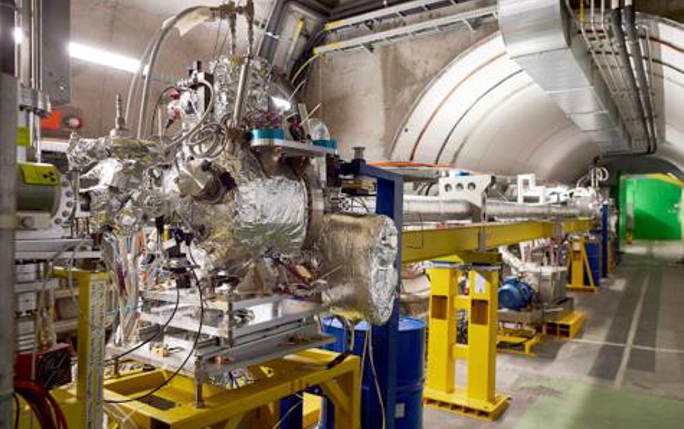News of breakthroughs from the AWAKE Experiment at CERN

Breakthrough results from the AWAKE project have just been published in the prestigious scientific journal ‘Physical Review Letters’, both of them at "editor's suggestion".
The first paper describes experimental evidence for seeded self-modulation of long bunches of protons in a rubidium plasma, using time-resolved Optical Transition Radiation (OTR) images taken with a streak camera, supported by beam core and beam halo images obtained at an imaging station with a scintillating screen.
The second paper reports on transverse self-modulation in a proton bunch, seeded by an intense laser pulse which co-propagates with the protons through a plasma. A linear variation of modulation frequency with plasma density is also observed, showing that the modulation and the plasma frequencies are equal, as expected.

Diagram of the AWAKE beam-line (Credits: Edda Gschwendtner, CERN)
These results are key to achieving the goal of using wakefields, created in a plasma and driven by long proton bunches, for accelerating electrons which are injected to follow these wakefields. Ultimately this technique could achieve extremely high accelerations up to hundreds of GeV or even to TeV in short distances, for the benefit of high-energy physics.
AWAKE is the Advanced Wakefield Experiment, hosted at CERN, which is a collaborative project with significant contributions from the Cockcroft Institute, including the QUASAR Group representing the University of Liverpool effort.
QUASARs are working particularly on methods to improve the diagnostics for the injected AWAKE electron beam characterisation. These include Novel emittance measurements using a special algorithm on quadrupole-scan data, longitudinal bunch measurement using optical imaging techniques, based on Coherent Diffraction Radiation and transverse profile imaging using Optical Transition Radiation, separating the proton and electron distributions using a Digital Micromirror Device.
Professor Carsten Welsch, Head of Physics at the University of Liverpool and QUASAR Group leader said: “These are fantastic results from the AWAKE experiment. They open up pathways for an entirely new technique for particle beam acceleration which can enable new types of experiments and applications.”
Further information:
‘Experimental Observation of Plasma Wakefield Growth Driven by the Seeded Self-Modulation of a Proton Bunch’, M. Turner et al., PHYSICAL REVIEW LETTERS 122, 054801 (2019) https://journals.aps.org/prl/abstract/10.1103/PhysRevLett.122.054801
‘Experimental Observation of Proton Bunch Modulation in a Plasma at Varying Plasma Densities’, K. Rieger et al., PHYSICAL REVIEW LETTERS 122, 054802 (2019) https://journals.aps.org/prl/abstract/10.1103/PhysRevLett.122.054802